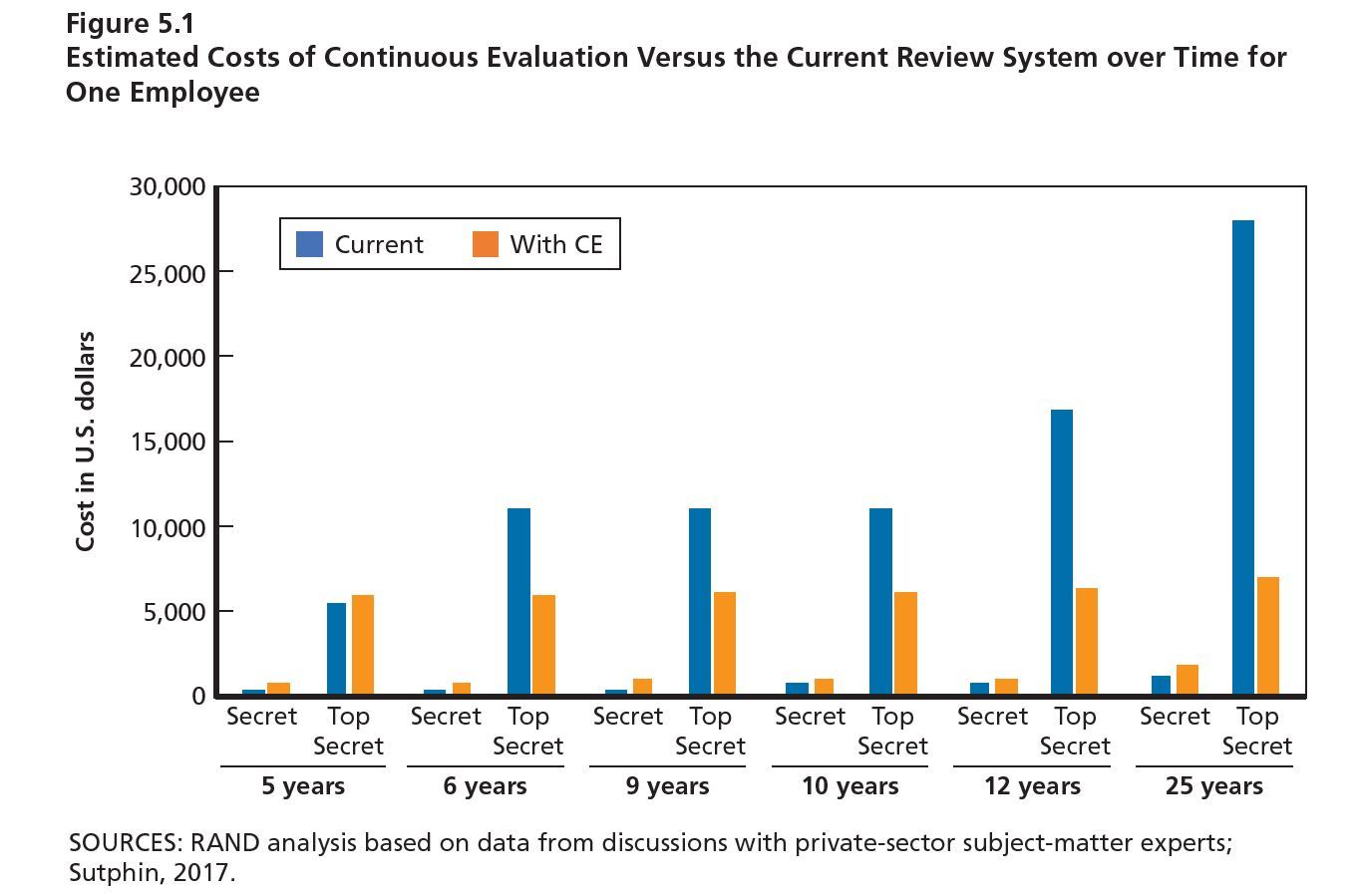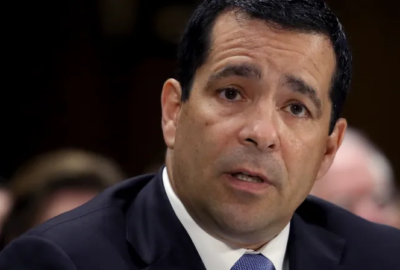Enrolling more security clearance holders in continuous evaluation could save billions
The RAND Corporation estimated government could save as much as $27.8 billion over 25 years by enrolling more security clearances into a sophisticated continuous...
The federal government could potentially save billions of dollars over the next two decades by enrolling more security clearance holders into a continuous evaluation program.
The RAND Corporation, which recently studied agencies’ continuous evaluation programs, estimated government could save as much as $30 billion over the next 25 years by phasing out the periodic reinvestigation process and moving more federal employees and contractors with security clearances into CE.
The average secret clearance costs about $430 per person, while most top secret clearances cost $5,596 per person, according to 2018 data from the Office of Personnel Management.
These costs would occur once as the Defense Department completes an initial investigation of a federal employee or contractor. But if enrolled in a continuous evaluation program, the costs of reinvestigating a clearance holder could be minimal, as much as $5 a month according to private sector estimates, RAND said.
Assuming a total population of 5.1 million secret and top secret clearance holders, RAND estimated agencies would spend about $2.16 billion over the next 25 years. Considering these costs of a CE program, RAND estimated agencies could save around $27.8 billion over the same time period.

“By augmenting the standard security clearance, investigation and adjudication process … with continuous evaluation, the organization can cut down on the cost of doing so many of those investigations and adjudications and have a near, real-time monitoring of the workforce,” David Luckey, a senior international and defense researcher with the RAND Corporation, said in an interview. “By cutting down on those periodic reviews of the population, we found that there [are] potential savings.”
RAND’s estimates, of course, are merely rough projections.
DoD, which sponsored RAND’s study on continuous evaluation, is already deploying this tactic as it prepares to assume responsibility for the governmentwide security clearance and vetting program from the Office of Personnel Management and National Background Investigations Bureau.
The Pentagon has been enrolling cleared individuals up for periodic reinvestigations into its continuous evaluation program, and defense officials have said that will continue.
Roughly 1.3 million people are enrolled in DoD’s continuous evaluation program to date, the department said last month, and RAND’s study doesn’t account for the potential savings the Pentagon and OPM may have already realized through its current CE population.
It’s also unclear exactly how much agencies like DoD or the Office of the Director of National Intelligence have spent over the years to stand up continuous evaluation pilots and further capabilities and automation systems.
“These estimations assume some constants, such as reinvestigation costs, employees remaining at the same level of clearance and time between each reinvestigation,” the RAND report reads. “We used the liberal estimate of $5 per employee per month as a buffer for additional costs potentially incurred, but we did not account in our estimates for in-depth reviews of individuals who are identified by CE as needing additional attention. While these examples do not provide a true number of potential savings in leveraging CE as opposed to reinvestigations, they do suggest that the savings could be substantial.”
Continuous evaluation, as DoD and other administration officials have said in multiple arenas, will be a key part of the Pentagon’s plans to continue NBIB’s recent progress on the security clearance backlog.
CE, or continuous vetting, is also a signature feature of the Trump administration’s attempts to modernize the suitability, credentialing and security clearance process, which hasn’t gotten a serious update in several decades. Specific policies for this initiative, called Trusted Workforce 2.0, should begin to surface toward the end of the year.
Still, RAND sees room for DoD to clarify and improve public knowledge about continuous evaluation — what it is, what it isn’t and how it can help agencies protect their employees, resources and classified information.
No definitions of continuous evaluation exist in government statute, according to RAND, and agencies have differing definitions of “insider threat” as well.
Other opportunities exist for DoD and the intelligence community to improve existing continuous evaluation programs.
“Whatever potential or actual shortcomings exist in continuous evaluation, it is clearly a step forward in our opinion,” Luckey said. “With that being said, things aren’t perfect. Systems aren’t perfect. The world is still evolving, and the information systems and data held in those information systems continues to evolve.”
Most existing continuous evaluation programs tap into a variety of data streams to track changes in a person’s credit or status with law enforcement.
But few CE programs have a technical way to truly map personality or other behaviors, which could predispose a clearance holder to acts of violence, theft or destruction, RAND said.
Embedding a standard technical solution to track social media behavior, for example, could help agencies address potential insider threats.
“People are the most important aspect of any organization, and the vast majority of employees, 99.9% of employees, are well-intentioned, hardworking, thoughtful, caring people,” Luckey said. “The issue is that [for the] one of a million or one out of 1,000 employees who goes wrong, organizations must have an ability to monitor their workforce and, when necessary, have an ability to weed out those hopefully potential insiders, before they threaten the organization or its employees.”
Most CE programs don’t have an existing mechanism to anonymously collect reports or tips about cleared individuals, which could point agencies to more easily recognize disgruntled employees.
Copyright © 2025 Federal News Network. All rights reserved. This website is not intended for users located within the European Economic Area.
Nicole Ogrysko is a reporter for Federal News Network focusing on the federal workforce and federal pay and benefits.
Follow @nogryskoWFED





